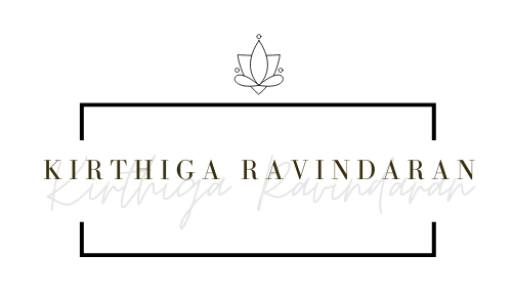
“…..in her embodied form, a black image, of bloody mouth and bloody eyes, wearing crimson garlands and smeared with crimson unguents, attired in a single piece of red cloth, with a noose in hand, and resembling an elderly lady, employed in chanting a dismal note and standing full before their eyes.”
— Mahabharatha – Odes to Red Blood and Savage Death by Satya Chaitanya
The death of his father wasn’t surprising at all, seeing as it was battle but the way he was slain mercilessly caused Ashwathama to clench his fists so hard that he could feel his entire body tremble in anger.
You always berated me for not being friends with the Pandava brothers, your preferred lot. You despised me, your son, for choosing to be with Duryodhana, the nefarious first born of the Kaurava siblings and today, it was your favourite students who killed you, not Duryodhana.
Ashwathama was already weeping as he registered his thoughts.
You didn’t die in chivalry like Bhishma, you died in deceit. I swear upon the rising sun, your death will be avenged, father.
…
He ran as fast as he could, laughing in maniacal glee as the tents behind him blazed with heat, flames and smoke. He heard voices, women screaming and for a moment, he had a vision of Draupadi beating her chest as she sat outside the burning tents, crying out for her five, incinerated husbands – her nuptial string like a noose on her neck.
He had a vision of the sons of the Pandavas, who were frantically running around, trying to comfort their deranged mother and put out the fire, realising that they have not one but five pyres to light up alongside their fallen soldiers – including Drona and Bhishma.
Ashwathama stopped short as he nearly collided into someone – a woman. His ecstacy was soon replaced by fear as he stood rooted to the spot, numb with trepidation.
Her tresses were long, as it swept the grimy battle field. She was clothed in a red saree, that clung on to her and Ashwathama would have sworn that her saree was dripping blood. Her every step was enunciated with the sound of her anklets, one that sent chills down Ashwathama’s spine. Her left hand carried a hooked vajra. What surprised Ashwathama most was her face. She was as dark as the night sky that blanketed the Gurushektra battlefields but her eyes were shining mischievously. Ashwathama could make out a third eye on her forehead, an oval slit of dark purple that looked like a bruise. From a distance, a donkey brayed as she turned around and spotted Ashwathama.
Her laughter echoed off the trees as Ashwathama’s hair stood. She looked at him, with a benign smile as he realised how beautiful this woman was, despite the wrinkles on her face.
“You don’t recognise me do you ? My name is Kalaratri.”
…
I wanted to give a pretty solid introduction for the seventh Navarathri post, so I literally re-imagined an old fable and managed to deliver it in my own words.
For my friends who are a little lost, this is an excerpt from the Mahabharatha, where the son of Guru Dronacharya, Ashwathama, decides to seek revenge on the Pandava princes for slaying their dad through a sick game of lying. He sets the enemy’s tent on fire, thinking it was the five Pandava princes but he messed up and killed Draupadi’s five sons instead.
(If you want to read about the death of Drona, I suggest you click here!)
Ashwathama then encounters the form of Kalaratri in the height of his frenzied killing rampage. Her appearance on the battlefield represents the horrors of death and blood according to the Mahabharatha. This is ONE legend of Goddess Kalaratri.
Common question many might have – is Kali and Kalaratri the same ?
Like I’d always emphasize – there is never a right answer. They may be the same, they may not be the same. It doesn’t matter.
Now, it is believed that Kalaratri emerged from the forehead of Durga while battling Mahishasura. Mahishasura had a group of Asura cronies who were also fighting alongside him, and Raktabeejan was one of them.
Now this dude is no ordinary dude. He didn’t have a buffalo’s head but he had this “condition” where if just one drop of his blood touches the earth, another Raktabeejan emerges. Basically, he was able to multiply when injured so there was no possibility of eradicating him because he just keeps popping up from his own blood puddles. Sounds fascinating ?
Our lady Durga, was obviously stressed. Even with that many hands, she couldn’t stop this guy. On the other hand, she had Buffalo Head charging at her. Amidst all that frustration and apprehension, Kalaratri emerged from her forehead, symbolising a ferocious form of Durga.
Both ladies were terrific partners on the battlefield. For every blow that Durga aimed at Raktabeejan, Kalaratri’s long tongue was immediately out to consume the blood spillage before it touched the soil. Their efficient alliance was no match for Raktabeejan as they finally destroyed him.
She may represent darkness and the violence of Mother Nature that involves morbid death, but she is also after all known as “ma” – a mother to her children who believes in her.
Mystifyingly beautiful, rich with melanin and a trusty partner when it comes to war – she definitely feared AND revered. Who wouldn’t want to, right ?
File Photo : Upasana Govindarajan (Pen and Pencil).
